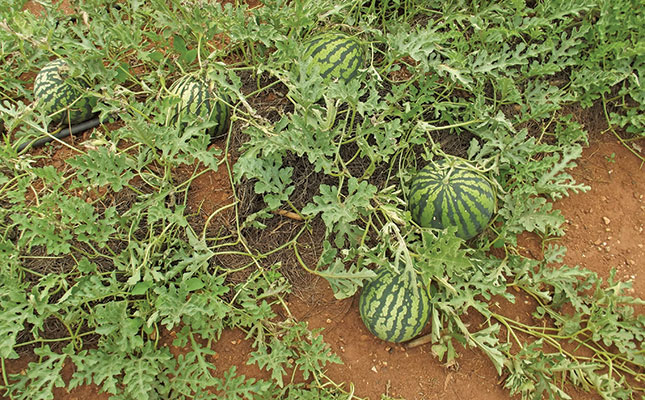
Photo: Bill Kerr
The problem, however, is that watermelons, particularly seedless varieties, require a warm temperature (25°C to 35°C) to germinate.
The good news is that you can give the seed a helping hand by pre-germinating it early in the season when the weather is cooler.
Whether you intend planting the seed directly into the soil or into seed trays, pre-germination is worth the effort as it gives you a quick, uniform start. This does not apply to hybrid and seedless watermelons, however; these usually go into seed trays in a warm environment.
An effective way to pre-germinate seed is to use an electric blanket:
- Place a sheet of plastic, followed by a few sheets of newspaper, on one half of the blanket;
- Wet the newspaper and sprinkle the seed onto the moist paper;
- Cover with a few more sheets of newspaper, and moisten;
- Place another sheet of plastic on top, and fold the other half of the electric blanket over the layers.
Experiment with the blanket settings in advance to ensure the temperature stays constant within the given parameters of 25°C to 35°C.
It’s a good idea to insert a few seeds the day before you insert the main batch, keeping the control sample separate.
Add the main batch, but watch the control sample for signs of root emergence. Once the control sample starts germinating, the main batch is ready for planting. If the temperature is right, germination will usually take between three and five days.
Spacing can be done on the square (in a grid pattern) or in rows. I prefer rows as this allows for easier mechanical cultivation.
The row width depends on the vigour of the variety. Use 2m inter-row spacing as a rule of thumb. You can go closer with some icebox types and a bit wider for very vigorous types.
The plants should be about 50cm apart within the row, but this can be increased up to 90cm if you are planting a vigorously growing vartiety.
Correct moisture
If planting expensive seed, try to determine the lowest population that can be used for the variety before the yield decreases. Plant the seed about 15mm deep into moist but not sodden pre-irrigated soil.
With pre-germinated seed and soil at the correct moisture level, the seed should emerge with little or no irrigation. This is a big advantage when planting into soil that crusts easily.
In the cool season, form small east-west ridges and plant on the north side of each ridge. The raised soil faces the sun’s rays directly and becomes warmer than soil on a level surface.
Using transplants
When transplanting, pre-irrigate the plugs, ensuring that the medium is wet enough to prevent the root hairs from drying out at planting. Damaged root hairs will increase the chance of fusarium wilt.
Bill Kerr is a vegetable specialist and a breeder of a range of vegetables.












